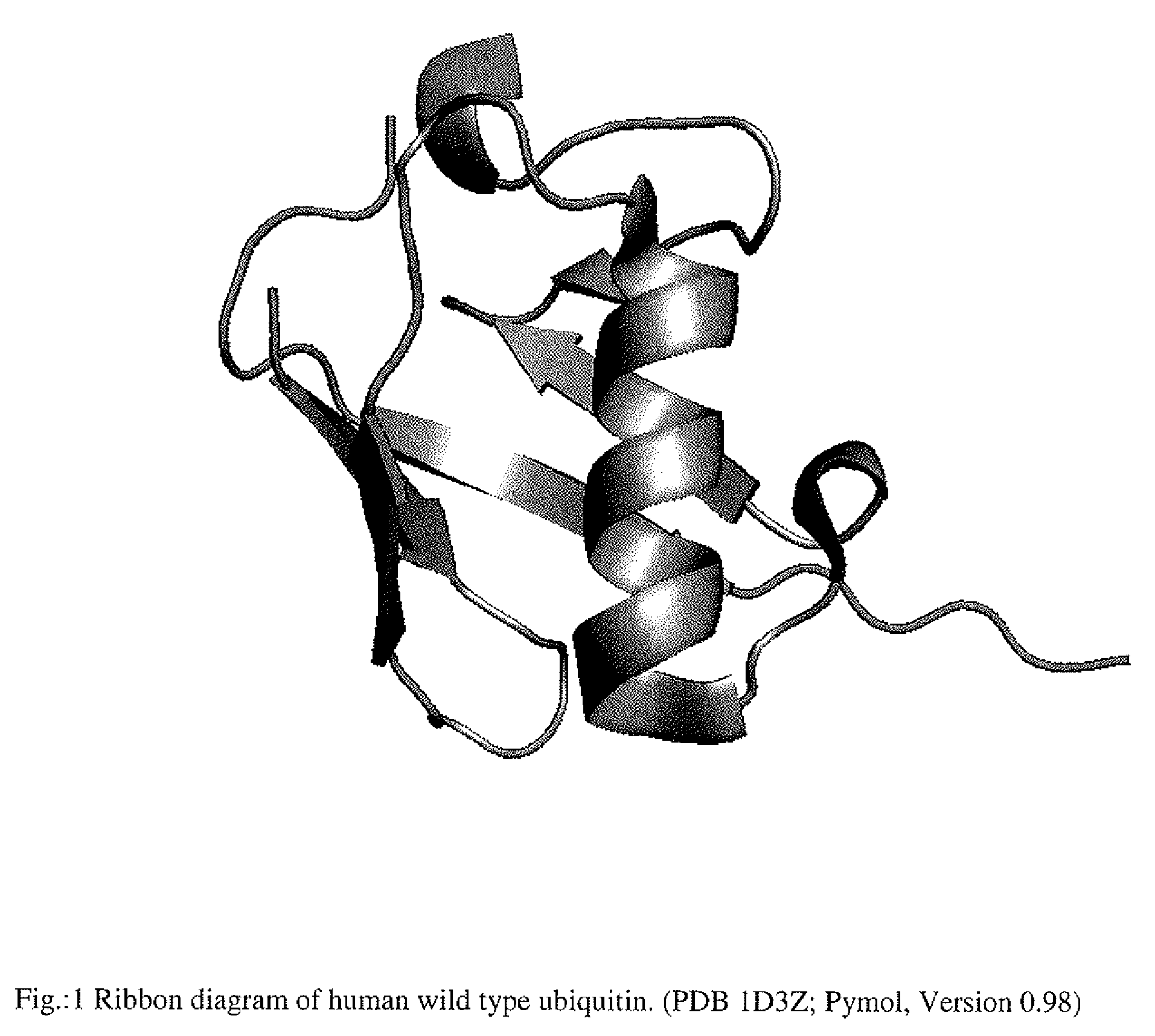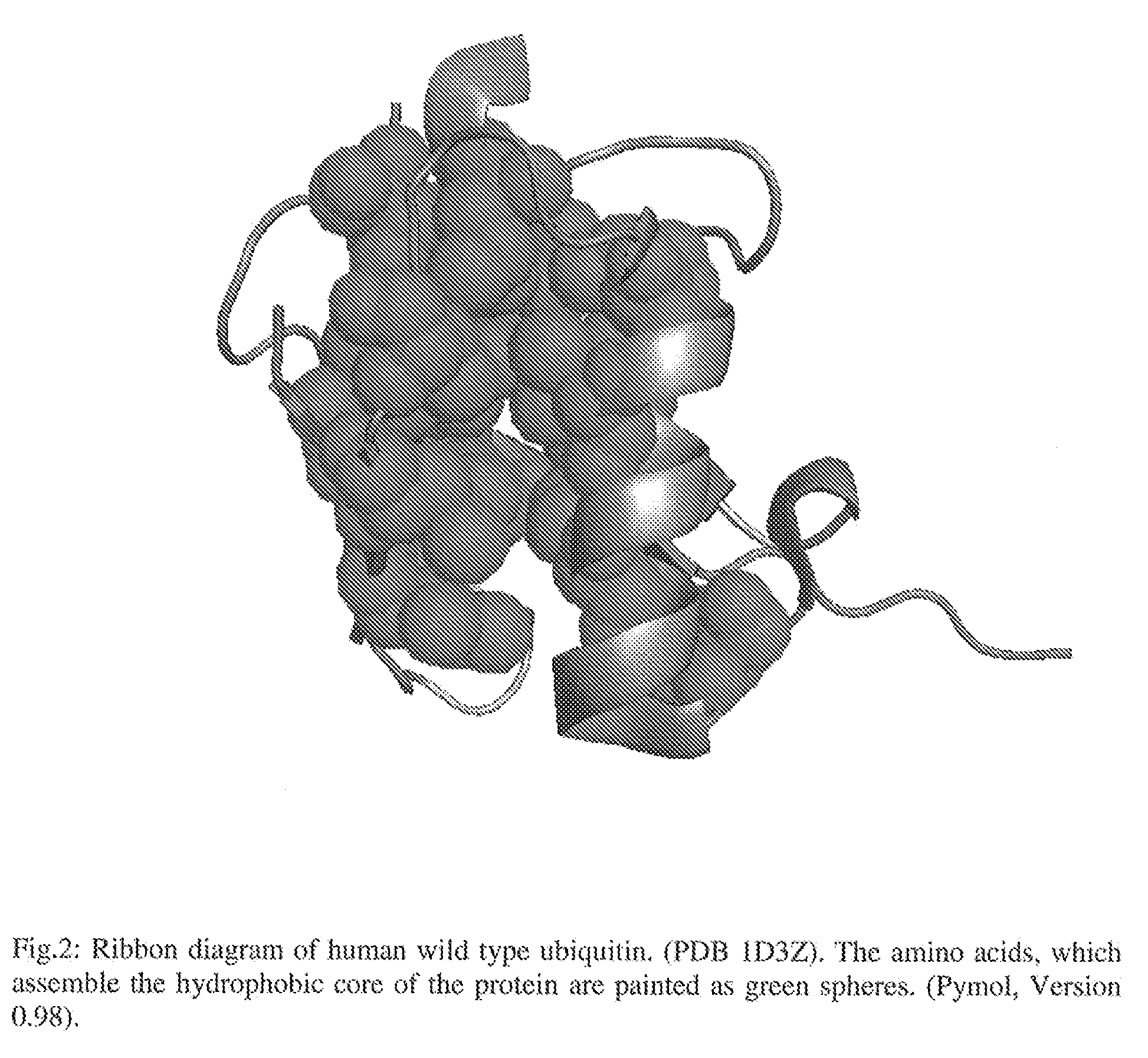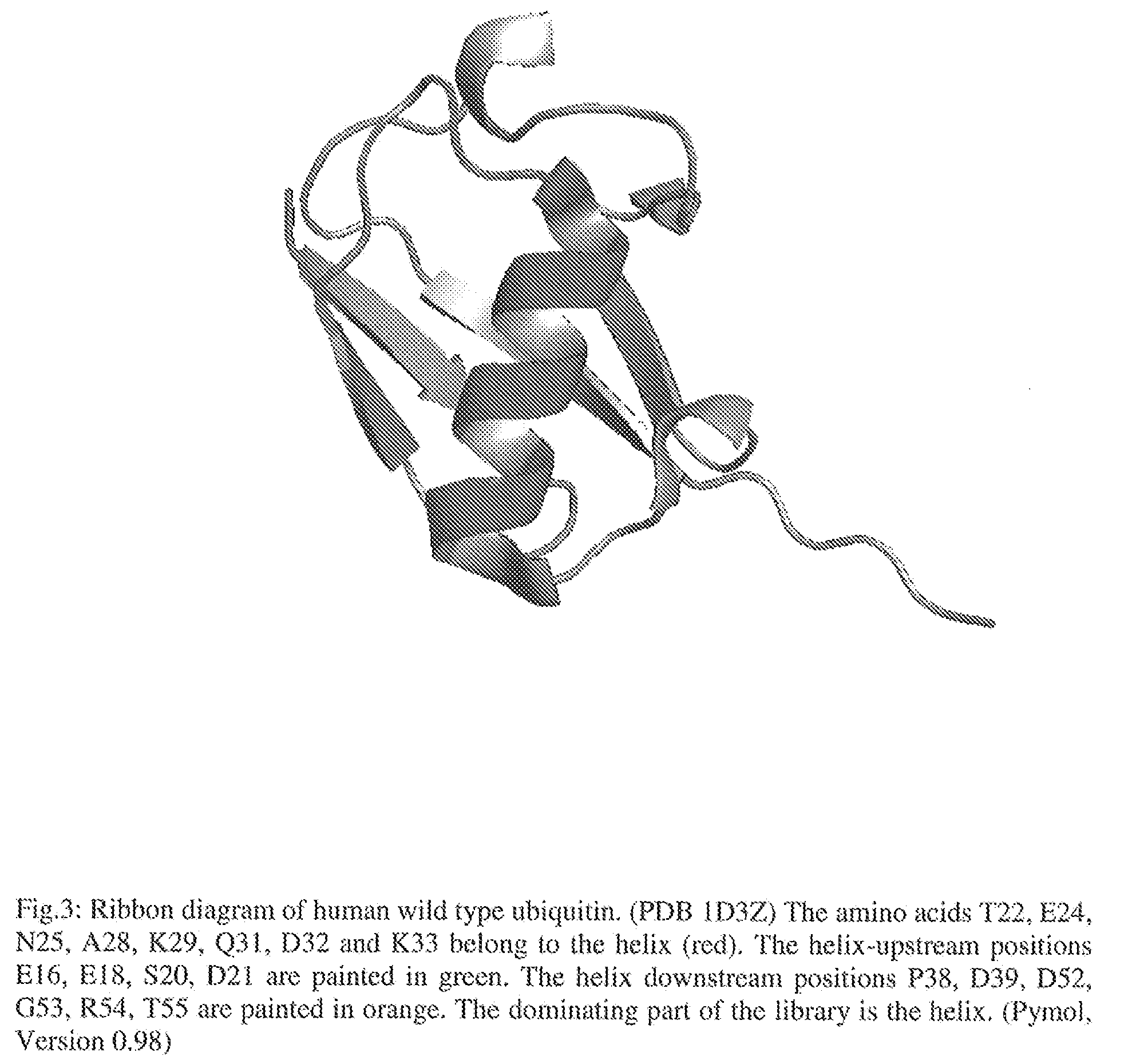Artificial binding proteins based on a modified alpha helical region of ubiquitin
a technology of alpha helical region and artificial binding protein, which is applied in chemical libraries, combinational chemistry, sugar derivatives, etc., can solve the problems of limited practical use of antibodies, and insufficient amounts of antibodies, and achieves high affinity ubiquitin-derived effects
- Summary
- Abstract
- Description
- Claims
- Application Information
AI Technical Summary
Benefits of technology
Problems solved by technology
Method used
Image
Examples
examples
[0131]In the following, data is presented, which describe how a ubiquitin library was constructed using the helix as a central secondary structure motive. Binding active variants versus TNFα were selected via some embodiments of the ribosome display selection technology. The binders were recombinantely produced as soluble proteins in E. coli. Variants showing TNFα binding activity were identified by an ELISA hit-screening procedure. By a concentration dependant ELISA the apparent affinity of one of these “first generation” binders to TNFα were determined at 400 nM.
Library Coordinates of the Ubiquitin Library and Different Embodiments Thereof
[0132]The amino acids T22, E24, N25, A28, K29, Q31, D32 and K33 belong to the alpha helix of human ubiquitin and represent the core-positions of the library (FIG. 3). The helix-upstream positions E16, E18, S20, D21 and the helix downstream positions P38, D39, D52, G53, R54, T55 additionally enlarge the surface accessible area to a maximum of 1485...
example 1
PCR-Based Synthesis of the SPA10 Library is Described
[0134]In an Overlapping Extension Ligation PCR five oligonucleotides were assembled to synthesize the library DNA fragment (FIG.: 8). Three of the synthesis primers, SPAF2, SPAF3 and SPAR2, were synthesized as sequence specific randomized oligonucleotides, which encoded the SPA10 helix library.
[0135]The first synthesis-step was performed as follows: 100 μl PCR volume containing 0.2 mM dNTPs (10 mM stock, dNTPmix, ROCHE); 5 units PWO Polymerase (250 units stock, ROCHE);
1 μM Primer SPAF15′-GTTTAACTTTAAGAAGGAGATATACATATGCAGATTTTTGTGAAAACCC-3′;0.25 ∞M Primer SPAF25′ CACTCTGGAAGTGGAGCCCNNKGACNNKATCNNKNNKGTGAAGNNKAAGATCNNKGACAAGGAGGGCATCCCG-3′;0.25 μM Primer SPAF35′-CTGGGCGGGTAAACAGCTCGAAGACNNKNNKNNKCTGAGCGATTACAACATCCAGAAAGAAAGC-3′;1 μM Primer SPAR15′-CGCAGACGCAGCACCAGATGCAGGGTGCTTTCTTTCTGGATGTTGTAATCGC-3′;0.25 μM Primer SPAR25′-CGAGCTGTTTACCCGCCCAGATCAGACGCTGCTGATCMNNCGGGATGCCCTCCTTGTC-3′;0.25 μM Primer SPAR35′-GGGCTCCACTTCCAGAGTGATGG...
PUM
| Property | Measurement | Unit |
|---|---|---|
| volume | aaaaa | aaaaa |
| pH | aaaaa | aaaaa |
| volume | aaaaa | aaaaa |
Abstract
Description
Claims
Application Information
 Login to View More
Login to View More - R&D
- Intellectual Property
- Life Sciences
- Materials
- Tech Scout
- Unparalleled Data Quality
- Higher Quality Content
- 60% Fewer Hallucinations
Browse by: Latest US Patents, China's latest patents, Technical Efficacy Thesaurus, Application Domain, Technology Topic, Popular Technical Reports.
© 2025 PatSnap. All rights reserved.Legal|Privacy policy|Modern Slavery Act Transparency Statement|Sitemap|About US| Contact US: help@patsnap.com



